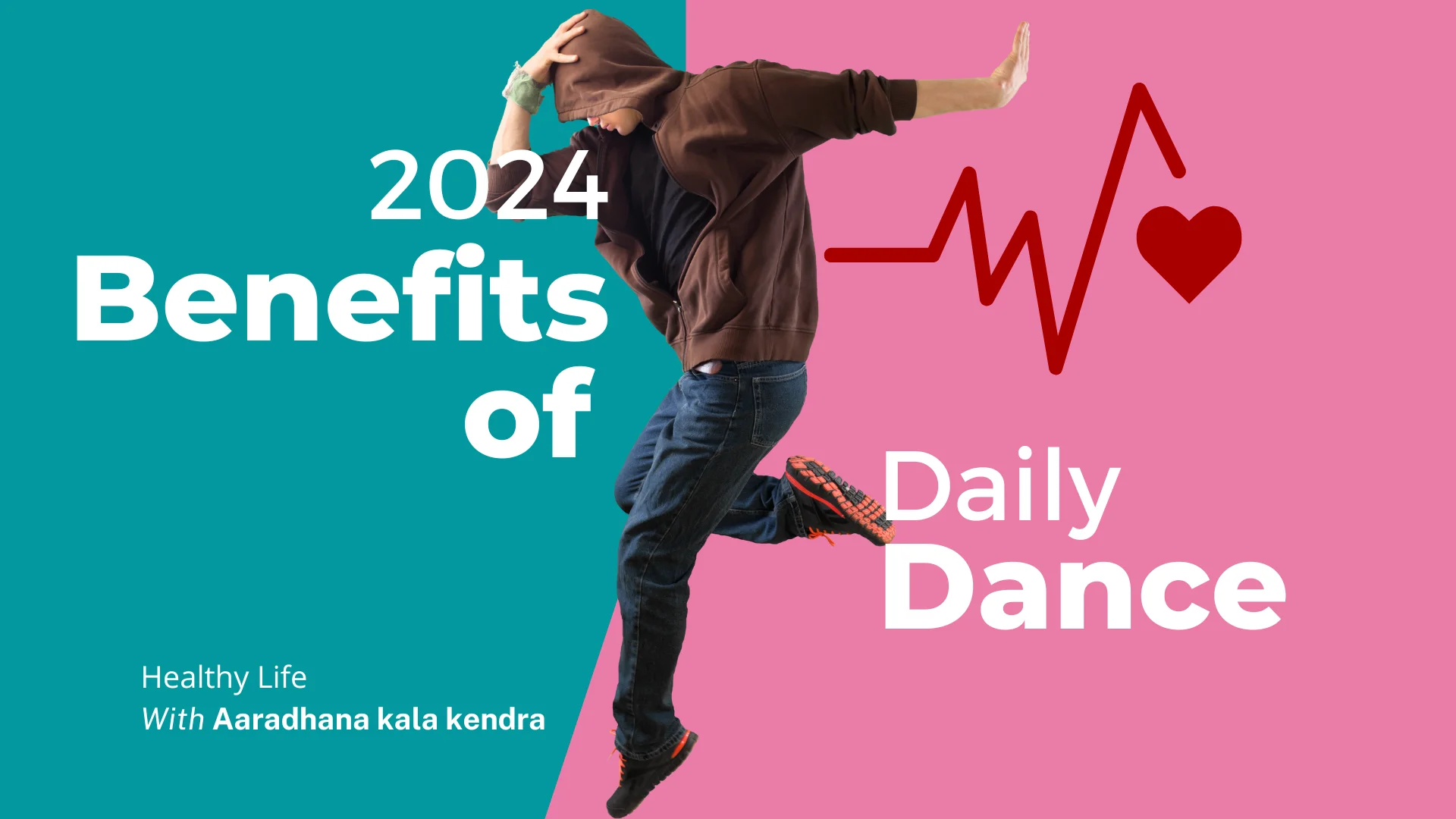Dance, a dynamic blend of artistic expression and physical activity, transcends mere entertainment. It serves as a holistic benefits of Dance approach to enhancing wellness, providing a wide array of benefits that encompass physical, mental, emotional, social, and cultural dimensions. From the rhythmic steps of classical forms like Odissi and Bharatanatyam to the energetic beats of Hip Hop and Bollywood, dance offers a comprehensive pathway to a healthier, more fulfilled life.
Introduction
The art of dance has been celebrated for centuries, not just for its aesthetic appeal but also for its profound impact on overall well-being. Engaging in dance is more than just learning steps or performing routines; it is an immersive experience that cultivates physical health, mental clarity, emotional stability, and social connectivity. This article explores the multifaceted benefits of dance, illustrating how this vibrant form of expression can enhance various aspects of life.
The Physical Health Holistic Benefits of Dance
Dance as a form of physical exercise offers numerous benefits that contribute to overall health and fitness. The continuous movement involved in dancing provides an excellent cardiovascular workout, strengthens muscles, and enhances flexibility and balance.
Cardiovascular Fitness
Dancing is a great way to improve cardiovascular health. Regular dance sessions elevate heart rate, increase blood circulation, and improve lung capacity. These benefits collectively enhance stamina and endurance, making everyday activities easier and less tiring. Dance styles such as Zumba, Salsa, and Jazz are particularly effective for cardiovascular conditioning, combining high-energy movements with rhythmic music to keep the heart pumping and the body moving.
Flexibility and Balance
Dance movements require a range of motion across various joints, promoting flexibility and reducing stiffness. Stretching exercises, which are an integral part of dance routines, help lengthen muscles and increase their elasticity. Additionally, dance enhances balance and coordination, vital for preventing falls and injuries. Styles like Ballet and Contemporary dance emphasize grace and control, significantly improving balance and spatial awareness.
Strength and Endurance
Dance builds muscle strength by engaging various muscle groups simultaneously. From the powerful leg muscles used in Tap dance to the core strength required in Belly dance, each style contributes to overall muscular development. Regular practice also boosts endurance, enabling dancers to perform longer without fatigue. The dynamic nature of dance ensures a comprehensive workout that tones and sculpts the body.
Mental and Emotional Holistic Benefits of Dance
Beyond its physical advantages, dance significantly impacts mental and emotional well-being. It serves as a powerful tool for stress relief, cognitive enhancement, and emotional expression.
Stress Relief
Dancing is a natural stress-buster. The physical activity involved in dancing triggers the release of endorphins, the body’s natural mood elevators. These chemicals reduce stress and anxiety, leaving dancers feeling happier and more relaxed. The immersive nature of dance allows individuals to momentarily escape their worries, focusing entirely on the music and movements. This meditative aspect of dance is particularly beneficial in today’s fast-paced world.
Cognitive Function
Learning and remembering dance routines engage the brain, enhancing memory and cognitive skills. The need to coordinate steps, rhythm, and timing stimulates mental processes and improves brain function. Studies have shown that dancing can delay the onset of dementia and improve cognitive function in older adults. Dance styles like Ballroom and Line dancing, which involve memorizing patterns and sequences, are especially beneficial for mental acuity.
Emotional Expression
Dance provides a unique outlet for emotional expression. It allows individuals to convey feelings and experiences that might be difficult to express through words. This emotional release can be therapeutic, helping to process and manage emotions. Whether it’s the joyful exuberance of Bollywood dance or the soulful expressions in Contemporary dance, each style offers a different way to explore and release emotions.
Social and Cultural Holistic Benefits of Dance
Dance is inherently social, often performed in groups or pairs, fostering a sense of community and cultural appreciation.
Community Building
Participating in dance classes or social dances creates opportunities for social interaction and community building. These settings allow individuals to meet new people, build friendships, and develop a sense of belonging. Dance events and performances further strengthen community bonds, bringing people together to celebrate shared experiences. Social dances like Swing and Salsa are particularly effective at fostering a sense of camaraderie and mutual support.
Cultural Appreciation
Exploring different dance forms can deepen cultural understanding and appreciation. Each dance style carries its own history, traditions, and cultural significance. Engaging with these forms allows dancers to connect with diverse cultures and histories, fostering empathy and respect for different ways of life. Traditional dances like Flamenco and Kathak offer rich cultural narratives, while contemporary forms like Hip Hop provide insights into modern cultural expressions.
Tips for Incorporating Dance into Your Routine
To fully enjoy the holistic benefits of dance, it’s important to incorporate it into your routine effectively. Here are some tips to get started.
Start with Warm-ups
Always begin with warm-up exercises to prepare your body and prevent injuries. Stretching and light cardio exercises help increase blood flow to the muscles, making them more pliable and ready for the demands of dancing.
Set Realistic Goals
Set achievable goals for your dance practice. Whether it’s mastering a new move, improving your endurance, or simply enjoying the process, having clear goals helps maintain motivation and track progress. Celebrate small milestones along the way to stay encouraged.
Stay Consistent
Consistency is key to reaping the full benefits of dance. Regular practice, even if it’s just for a few minutes each day, can lead to significant improvements over time. Create a dance schedule that fits your lifestyle and stick to it.
Listen to Your Body
Pay attention to your body’s signals to avoid overexertion. If you feel pain or extreme fatigue, take a break and allow your body to recover. Incorporate rest days into your routine and ensure you’re getting enough sleep and nutrition to support your dancing activities.
Join Us at Aaradhana Kala Kendra
At Aaradhana Kala Kendra, we offer a variety of dance classes catering to different interests and skill levels. Our experienced instructors are dedicated to helping you explore the joy of dance while discovering its numerous benefits. Whether you’re a beginner looking to start a new hobby or a seasoned dancer seeking to refine your technique, our classes provide a supportive and enriching environment.
Embrace the transformative power of dance with us and unlock the holistic benefits it brings to your physical, mental, emotional, and social well-being.
FAQs
1. What are the main physical benefits of dance?
Dance improves cardiovascular health, flexibility, balance, strength, and endurance. Regular dancing helps tone muscles, increase stamina, and enhance overall physical fitness.
2. How does dance help with stress relief?
Dancing triggers the release of endorphins, the body’s natural feel-good hormones, which reduce stress and anxiety. The immersive nature of dance also provides a mental escape, allowing individuals to focus on the music and movements.
3. Can dance improve cognitive function?
Yes, learning and memorizing dance routines engage the brain, enhancing memory and cognitive skills. Dance can improve brain function and has been shown to delay the onset of dementia in older adults.
4. How does dance foster community building?
Dance classes and social dances create opportunities for social interaction, helping individuals build friendships and a sense of community. Dance events and performances further strengthen these bonds by bringing people together.
5. What types of dance are best for improving flexibility and balance?
Ballet and Contemporary dance are particularly effective for improving flexibility and balance due to their emphasis on grace, control, and a wide range of movements.
6. How can beginners incorporate dance into their routine?
Beginners can start by joining dance classes, following online tutorials, or practicing simple dance routines at home. It’s important to start with warm-up exercises, set realistic goals, stay consistent, and listen to your body to avoid overexertion.
Conclusion : Holistic Benefits of Dance
Dance, with its rich blend of physical activity, mental engagement, emotional expression, and social interaction, offers a holistic approach to enhancing well-being. By incorporating dance into your routine, you can enjoy improved physical health, reduced stress, enhanced cognitive function, and a stronger sense of community and cultural appreciation. Whether you’re stepping onto the dance floor for the first time or continuing a lifelong passion, the benefits of dance are boundless and transformative.


